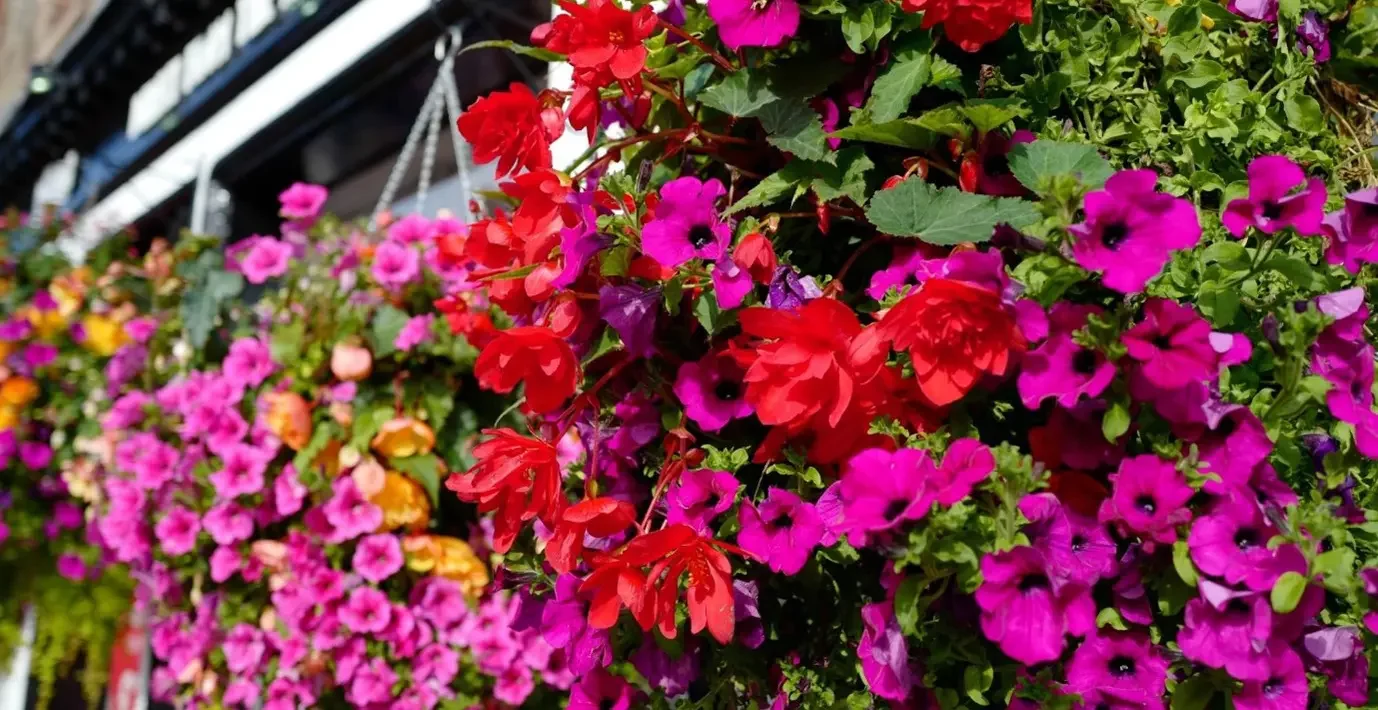Container gardens are wonderful for adding colour and structure to a patio or balcony and hanging baskets look wonderful in summer with festoons of brightly coloured bedding plants trailing down. Many plants will grow happily in containers, but they do require more watering than plants in the ground. Plants in the ground can reach their roots down and out into the soil in all directions in search of water. Plants in pots and hanging baskets cannot search beyond the walls of their container and require regular checking to ensure they have enough moisture.
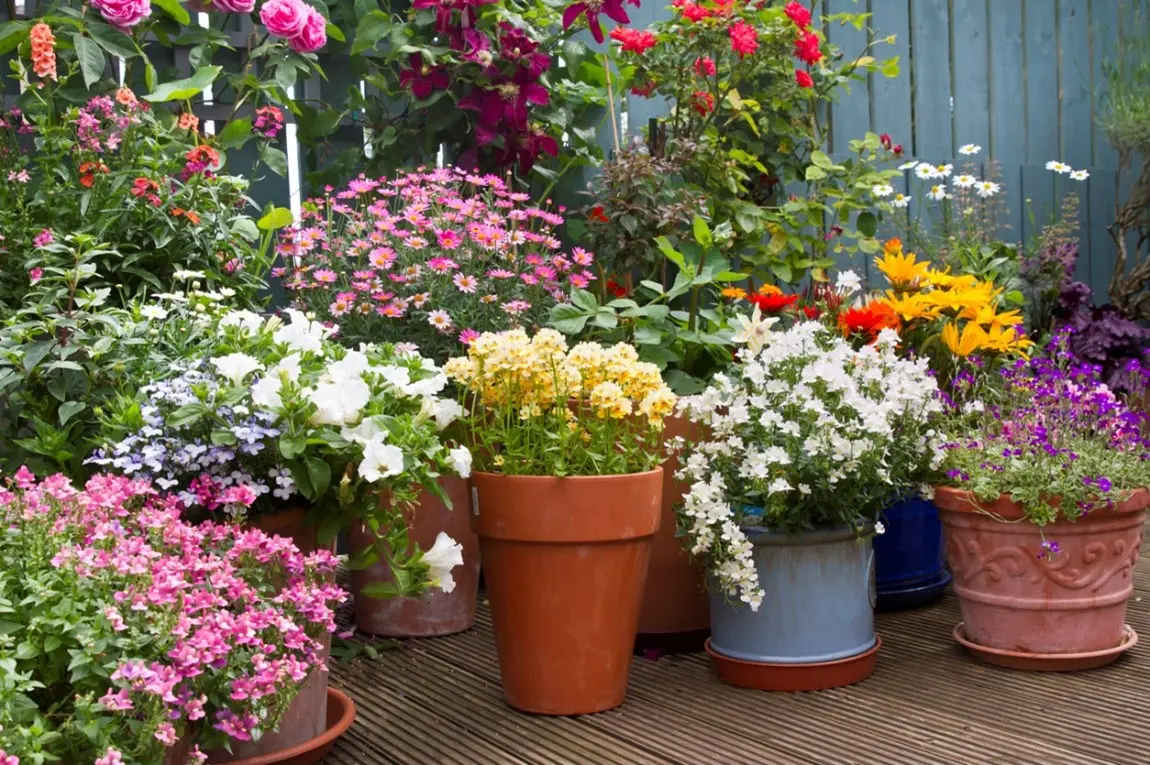
Follow these guidelines to ensure your potted plants thrive, and you can enjoy a garden surrounded by beautiful planted containers.
1. Pot Choice
Successful watering starts before you even plant up your chosen beauties. Start with careful consideration of the container itself. A smaller container will dry out much faster than a large one. Terracotta is porous and moisture will pass through the sides of the pot as well as the drainage hole in the bottom. This means they will dry out faster than glazed or plastic planters. Metal containers in the sun can get very hot, effectively cooking the roots and drying out the compost. Think about where the container is going to be placed, in sun or shade for example and choose a container to fit the place. Containers in sun will dry out faster than those in shade.
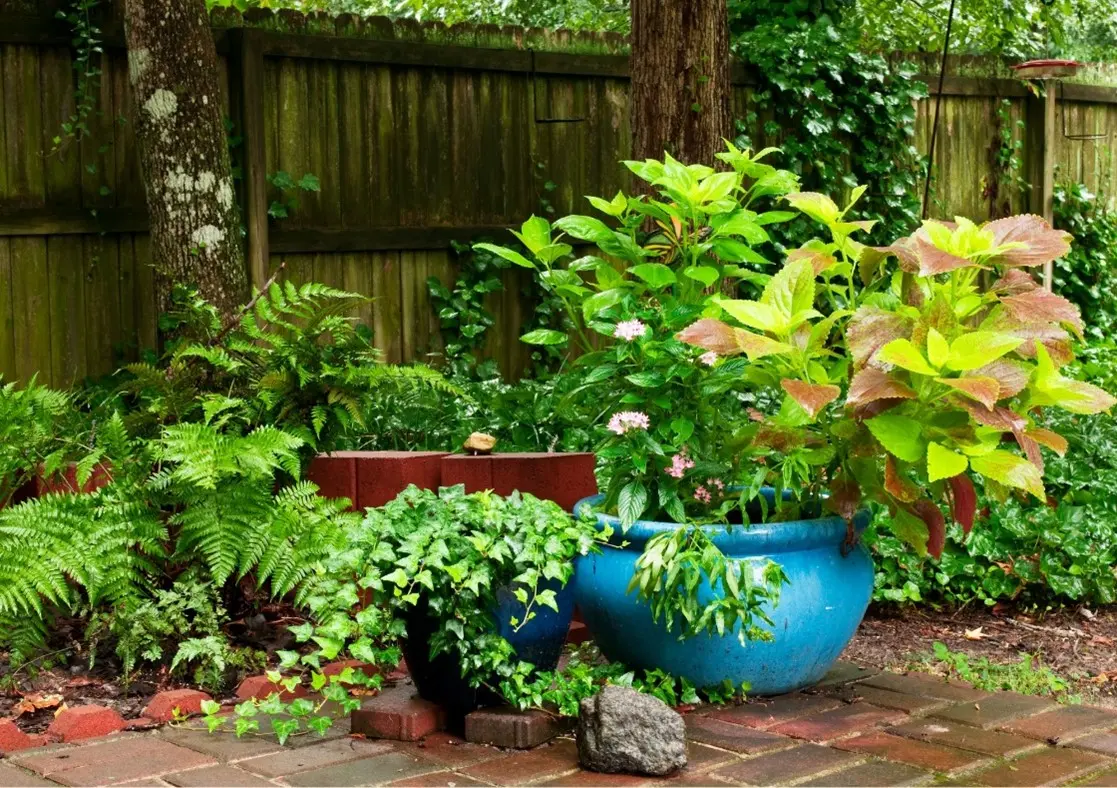
Make sure your container has drainage holes in the bottom to allow excess water to drain away. Placing a broken piece of pot over the hole prevents compost falling out of the hole but allows water to drain. Placing a layer of gravel in the bottom is not necessary. In the winter raise the pot up on feet to prevent soil becoming saturated. In summer saucers placed underneath help catch and retain water that drains away too readily. Empty them after an hour to prevent the soil being saturated.
2. Plant Choice
Think about the plants you are potting into the container. It is not a one-size-fits-all scenario. Rhododendrons and vegetables need consistent levels of moisture and will do better in less porous materials. Terracotta is great for Mediterranean plants and succulents because their ability to wick water through the sides means it is hard to overwater them. Citrus need to dry out a little between waterings and thrive in terracotta pots.
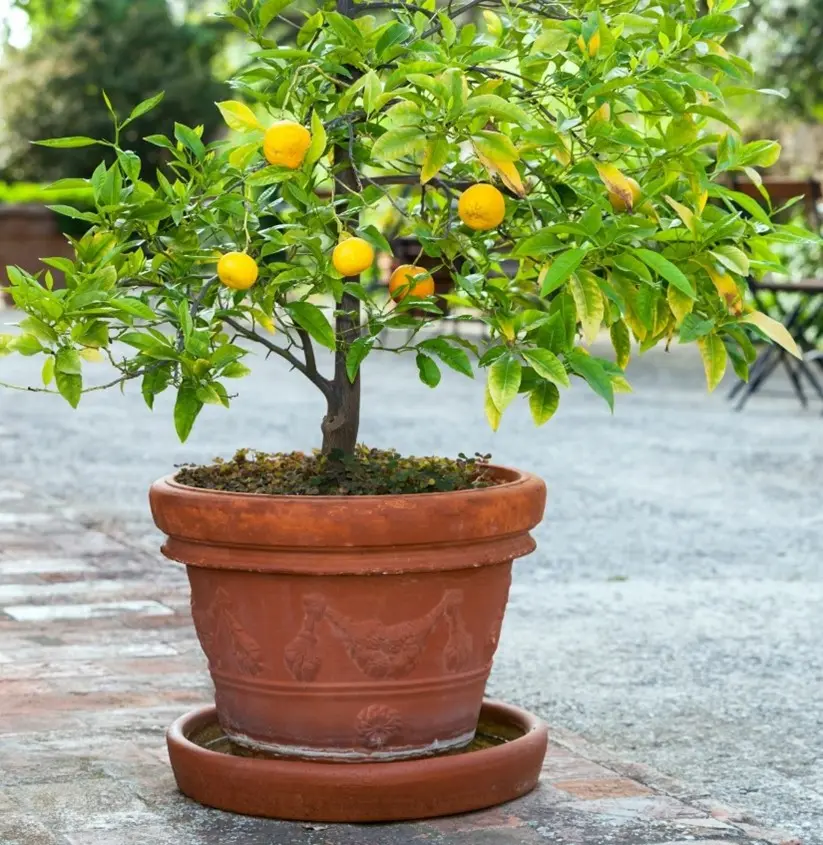
3. Compost Choice
Choosing the right compost for the right plant is as important as choosing the right pot. There are three main types of compost for potting outdoor plants into containers:
Soil based compost, also known as John Innes. This is used for long term planting of established plants in pots. It tends to be quite dense, has lots of nutrients and retains moisture well. For younger plants it is worth mixing some soil based compost with multi-purpose to open up the structure and increase the drainage as the roots establish. Use this compost for most shrubs and topiary kept in containers. For alpines use a soil based compost and mix it with horticultural grit to increase the drainage.
Ericaceous compost. This is needed by acid loving plants such as rhododendrons, azaleas, camellias, pieris and blueberries. It tends to hold on to moisture relatively well.
Multi-purpose compost is a general purpose compost for shorter term planting. It is ideal for summer bedding in hanging baskets, vegetable plants etc. After the plants have gone over add it to your compost heap or use it as a mulch on your borders. It contains nutrients that will last for about 6 to 10 weeks and after that pots will need weekly feeds with fertiliser. For smaller containers like hanging baskets it is useful to add water retaining crystals to the compost to prevent the containers drying out too quickly.
Mulching the surface of pots can reduces water lost by evaporation, but most moisture is lost through the plants leaves, so careful watering will still be required.
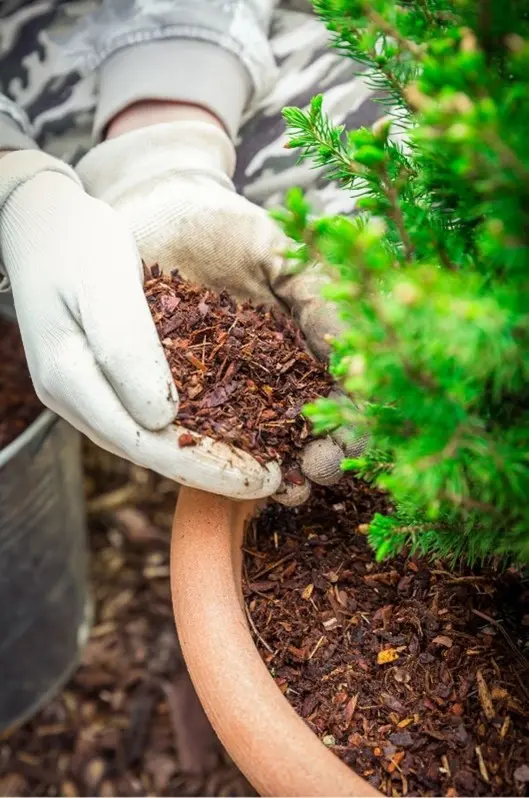
4. Check First
Before grabbing a watering can or hose check the moisture level of your containers. Compost with peat in is being phased out. The peat substitutes used by different brands hold onto moisture differently. Often they look dry on the surface but are in fact quite moist underneath. Push you finger a few inches down into the surface of the soil at the edge of the pot.
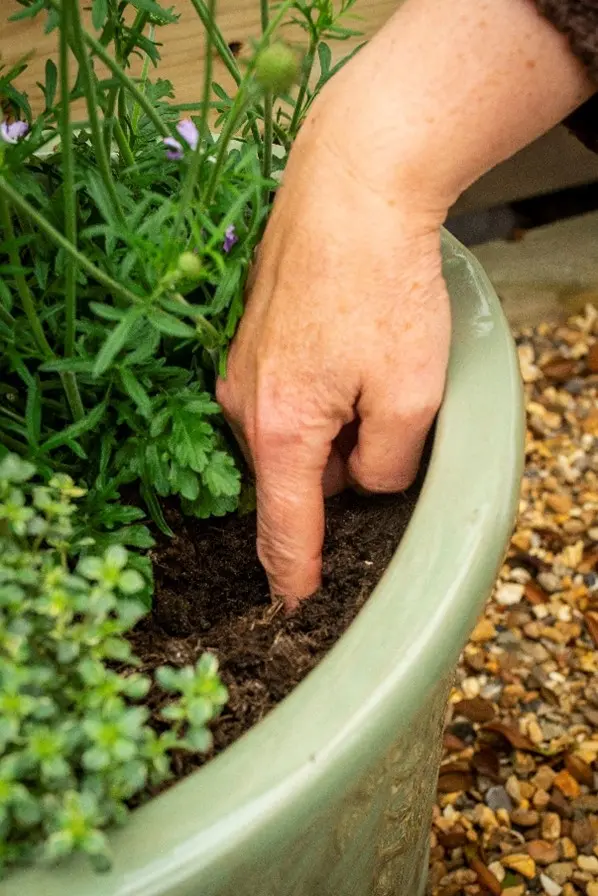
If it is not too large a pot, you could try lifting the pot. If it feels very light it probably needs watering, if it is heavy it probably does not. Most plants will be fine if allowed to dry out a little between watering and citrus prefer it, especially in winter. Do try not to let your plants reach the wilting stage (see the common mistakes section below).
5. Choose When to Water
It is better to water first thing in the morning. This gives time for water to filter down through the soil before the sun gets too hot and it evaporates. Watering in the evening also allows this, but is more likely to lead to fungal problems and encourage snails if your plants or soil are wet overnight.
In very hot weather check daily and even twice daily. Plants use more water in warm or windy weather. Drought tolerant plants with small silvery leaves or succulents can be left longer between waterings but should not be allowed to dry out completely.
6. How to water
A good soaking once each week is better than a dribble every day. Try to pour water in quite slowly and allow water to fill up to the rim of the pot then allow that to soak in and repeat if needed. This stops soil and mulch being blasted out of the container. Rain water is better than tap water particularly for acid loving plants which don’t like the chemicals in tap water. Capture rain in a water butt and use a watering can. This allows you to target the soil more effectively and avoid watering the foliage.

If you are going away for a week in summer, group your pots together in a shady place to increase humidity around them and prevent them from drying out too quickly. You could also try using water spikes which release water slowly.
7. Common Mistakes
‘It’s been raining I won’t need to water the pots!’ Leafy foliage on plants particularly evergreen shrubs like the pieris pictured, can act like an umbrella. Rain rolls down the leaves and drips to the ground outside of the pot preventing water reaching inside the pot itself. Monitor your pots even if it has been raining and for evergreen shrubs keep monitoring all year round.
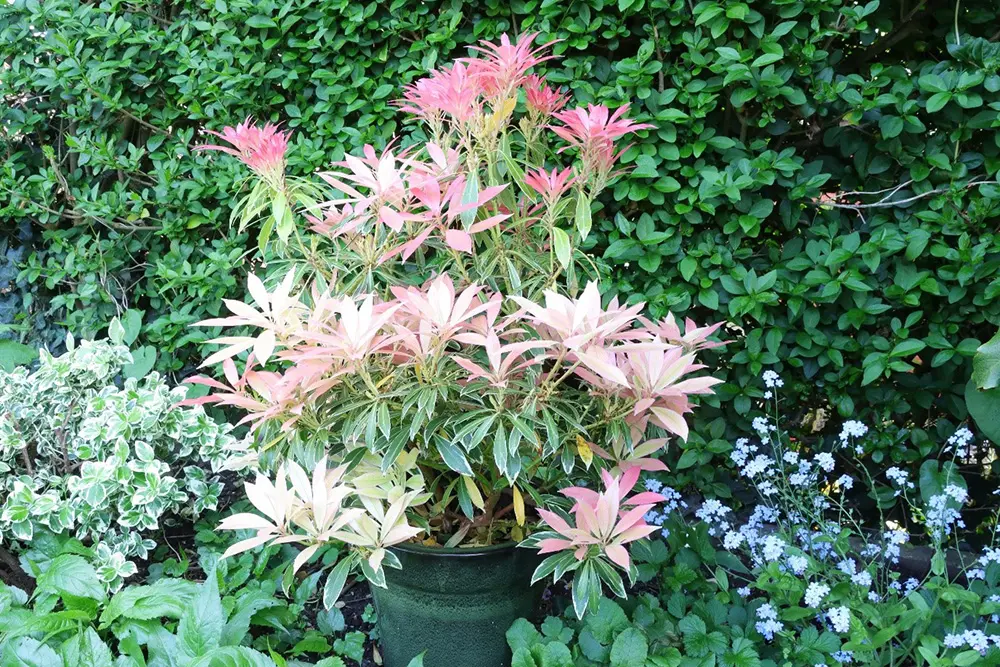
‘The leaves are all drooping it must be dry!’ The symptoms of overwatering are very similar to the symptoms of under watering. The leaves of overwatered plants often droop. Over watering also washes nutrients out of the soil. It is usually harder to rescue a plant which has been overwatered than one which has been under watered. Check pots before watering.
Container gardening is a great way to add colour and structure to patios or balconies, but it requires more watering than plants in the ground. Choosing the right pot, plant, and compost is the important way to begin. Monitoring pots and containers regularly is the best way to continue. With these guidelines, you can ensure your potted plants thrive, and you can enjoy a garden surrounded by beautiful planted containers.

By our resident horticultural expert





